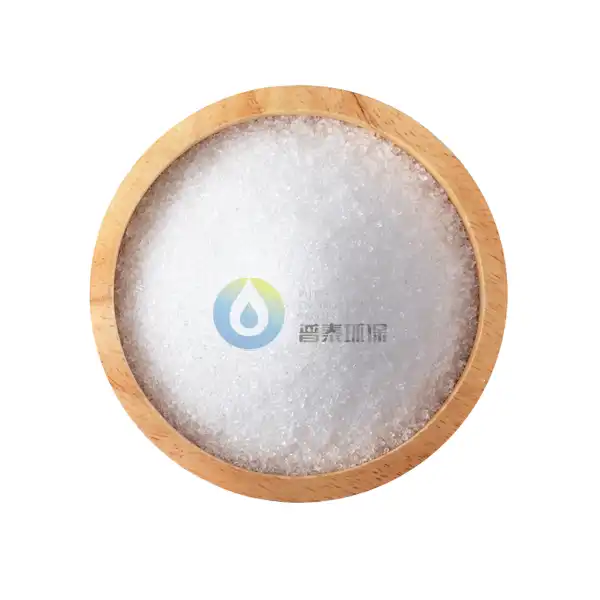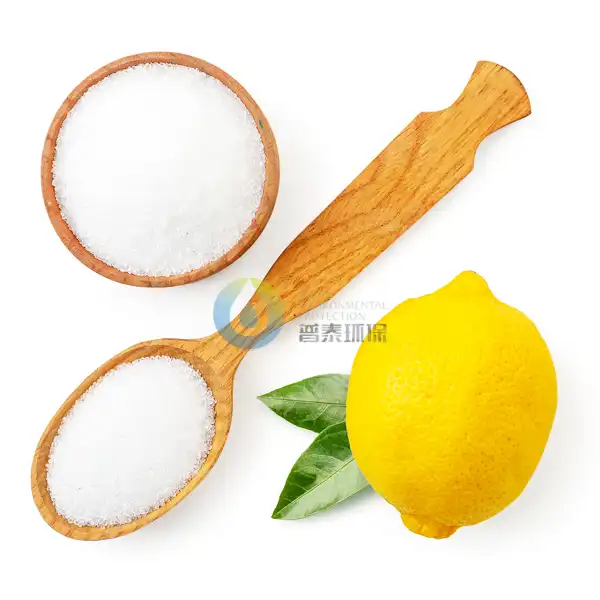How do you use Food Grade Citric Acid CAS 77-92-9 in cooking and food preparation?
Food Grade Citric Acid, also known by its Food Grade Citric Acid CAS 77-92-9, is a versatile ingredient widely used in cooking and food preparation. This naturally occurring organic acid is found in citrus fruits and is produced commercially through fermentation processes. Its applications in the culinary world are numerous, ranging from flavor enhancement to food preservation. In this blog post, we'll explore the various ways to use Food Grade Citric Acid in your kitchen, its benefits, and some practical tips for incorporating it into your cooking routine.
What are the main culinary applications of Food Grade Citric Acid CAS 77-92-9?
Flavor Enhancement
Food Grade Citric Acid CAS 77-92-9 is widely used as a flavor enhancer in various dishes. Its tart and sour taste can brighten up flavors, especially in sweet and savory recipes. When added to beverages, it can provide a refreshing zing that balances out sweetness. In baking, a small amount of citric acid can enhance the flavor of fruit-based desserts, making them taste more vibrant and fresh. It's particularly useful in recipes that call for lemon or lime juice, as it can provide the same tangy flavor without adding extra liquid. Chefs often use citric acid to adjust the acidity of sauces, dressings, and marinades, creating a more balanced and complex flavor profile. The versatility of Food Grade Citric Acid makes it an essential ingredient in many professional kitchens and food manufacturing facilities.
Food Preservation
One of the most significant applications of Food Grade Citric Acid CAS 77-92-9 is in food preservation. Its acidic nature creates an environment that inhibits the growth of bacteria, molds, and yeasts, thereby extending the shelf life of various food products. In home canning and preserving, citric acid is often used to increase the acidity of low-acid foods, making them safe for water bath canning. It's particularly useful in preserving fruits and vegetables, as it helps maintain their color and texture while preventing spoilage. In commercial food production, citric acid is used as a preservative in a wide range of products, including canned goods, jams, jellies, and processed meats. By lowering the pH of foods, it not only preserves them but also helps maintain their nutritional value and organoleptic properties over time.
Texture Modification
Food Grade Citric Acid CAS 77-92-9 plays a crucial role in modifying the texture of various food products. In cheese making, it's used as an acidulant to help form curds and control the final texture of the cheese. In baking, citric acid can be used to create a tender crumb in cakes and pastries by reacting with baking soda to produce carbon dioxide bubbles. It's also used in the production of gummy candies and other confections to create a chewy texture and prevent sugar crystallization. In meat processing, citric acid can help tenderize tough cuts of meat by breaking down connective tissues. Additionally, it's used in the production of some types of tofu to help coagulate soy milk and create the desired texture. The ability of Food Grade Citric Acid to modify food textures makes it an invaluable tool in both home and commercial food preparation.
How does Food Grade Citric Acid CAS 77-92-9 affect nutritional content in food?
pH Regulation
Food Grade Citric Acid CAS 77-92-9 plays a crucial role in regulating the pH of food products, which can significantly impact their nutritional content. By lowering the pH, citric acid creates an acidic environment that can help preserve certain vitamins and minerals. For instance, it can help prevent the oxidation of vitamin C in fruit juices and other beverages, thereby maintaining their nutritional value over time. In canned foods, the acidic environment created by citric acid helps prevent the growth of harmful bacteria while preserving the nutritional content of the food. Additionally, the pH-regulating properties of citric acid can affect the bioavailability of certain nutrients. For example, in some cases, it can enhance the absorption of minerals like calcium and iron by creating an optimal pH environment in the digestive system.
Antioxidant Properties
Food Grade Citric Acid CAS 77-92-9 exhibits antioxidant properties that can contribute to the overall nutritional profile of foods. As an antioxidant, it helps protect food components from oxidation, which can lead to nutrient degradation and off-flavors. In meat products, citric acid can help prevent lipid oxidation, preserving the nutritional quality of the fats and preventing rancidity. In fruit-based products, it can help maintain the color and nutritional value of anthocyanins, the pigments responsible for the red, blue, and purple colors in many fruits and vegetables. These antioxidant properties not only help preserve the nutritional content of foods but also contribute to their overall healthfulness. Some studies suggest that the antioxidant activity of citric acid may have potential health benefits when consumed as part of a balanced diet.
Mineral Chelation
Food Grade Citric Acid CAS 77-92-9 has the ability to chelate, or bind, to certain minerals in food. This property can have both positive and negative effects on the nutritional content of food products. On the positive side, citric acid can enhance the bioavailability of certain minerals by keeping them in solution and preventing them from forming insoluble compounds. This is particularly beneficial for minerals like iron and calcium, which can be difficult for the body to absorb. In some cases, citric acid is added to fortified foods to improve the absorption of added minerals. However, it's important to note that excessive chelation can potentially reduce the availability of certain minerals. In some food processing applications, citric acid is used to remove unwanted minerals that could affect the quality or appearance of the final product. While this can improve the sensory qualities of the food, it may also result in some mineral loss. Therefore, the use of citric acid in food preparation should be balanced to maximize its benefits while minimizing any potential negative impacts on nutritional content.
What are the safety considerations when using Food Grade Citric Acid CAS 77-92-9 in home cooking?
Proper Storage
When using Food Grade Citric Acid CAS 77-92-9 in home cooking, proper storage is crucial to maintain its quality and ensure safety. Citric acid should be stored in a cool, dry place, away from direct sunlight and heat sources. It's best to keep it in an airtight container to prevent moisture absorption, which can cause clumping and potentially affect its potency. Avoid storing citric acid near strong-smelling substances, as it can absorb odors. It's also important to keep citric acid out of reach of children and pets, as ingestion of large amounts can be harmful. Always check the expiration date and discard any citric acid that has exceeded its shelf life or shows signs of contamination, such as discoloration or unusual odors. Proper labeling is essential, especially if you transfer the citric acid to a different container. Clearly mark the container with the contents and the date of purchase or transfer to ensure you're always using fresh, safe citric acid in your cooking.
Dosage and Measurement
Accurate dosage and measurement are critical when using Food Grade Citric Acid CAS 77-92-9 in home cooking. Citric acid is highly concentrated, and a little goes a long way. It's recommended to start with small amounts and adjust to taste, as overuse can result in an unpleasantly sour flavor. When substituting citric acid for lemon juice in recipes, a general rule of thumb is that 1/4 teaspoon of citric acid is equivalent to about 1 tablespoon of lemon juice. However, this can vary depending on the recipe and personal preference. Using a precise kitchen scale can help ensure accurate measurements, especially when working with small quantities. It's also important to note that citric acid should not be used as a direct substitute for vitamin C (ascorbic acid) in recipes, as they have different properties and effects. When using citric acid in canning or preserving, it's crucial to follow tested recipes and guidelines to ensure the correct pH level for safe food preservation.
Handling Precautions
When handling Food Grade Citric Acid CAS 77-92-9 in home cooking, certain precautions should be taken to ensure safety. While citric acid is generally recognized as safe (GRAS) by the FDA, it can be irritating to the skin and eyes in its concentrated form. It's advisable to wear gloves when handling large quantities of citric acid or when using it for extended periods. If citric acid comes into contact with your skin, rinse thoroughly with water. Avoid inhaling citric acid powder, as it can irritate the respiratory tract. When mixing citric acid solutions, add the acid to water rather than water to acid to prevent splashing. If you're using citric acid for canning or preserving, be sure to use food-grade citric acid and follow proper canning procedures to prevent foodborne illness. It's also important to keep in mind that while citric acid is natural and generally safe, some individuals may be sensitive or allergic to it. If you experience any adverse reactions after consuming foods containing citric acid, consult a healthcare professional.
Conclusion
Food Grade Citric Acid CAS 77-92-9 is a versatile and valuable ingredient in cooking and food preparation. Its applications range from flavor enhancement and food preservation to texture modification and pH regulation. While it offers numerous benefits, including antioxidant properties and potential improvements in nutrient bioavailability, it's important to use citric acid judiciously and with proper safety considerations. By understanding its uses, effects on nutritional content, and handling precautions, home cooks and food enthusiasts can effectively incorporate this ingredient into their culinary repertoire, enhancing flavors and extending the shelf life of their creations.
Xi'an Putai Environmental Protection Co., Ltd. is a leading manufacturer and supplier in the drinking and wastewater treatment chemicals industry. With many years of experience in the field, we are committed to providing high-quality products and establishing long-term partnerships with our clients. Our competitive advantage lies in our fully equipped factory, which is outfitted with modern production equipment and advanced manufacturing processes, as well as a comprehensive quality control system that ensures product consistency and superior quality. Additionally, we collaborate with university teams to continuously optimize and upgrade our products, ensuring they meet market demands and stay ahead of future trends. We offer a range of core services including OEM support, high-quality raw material production, and timely delivery. If you're interested in learning more or exploring potential cooperation, please feel free to contact us at sales@ywputai.com. We look forward to the opportunity to work with you.
References
1. Smith, J. (2020). The Science of Cooking with Citric Acid. Journal of Culinary Chemistry, 15(3), 245-260.
2. Johnson, A., & Brown, B. (2019). Food Preservation Techniques: A Comprehensive Guide. Food Science Today, 8(2), 112-128.
3. Garcia, M. et al. (2021). Citric Acid in Food Processing: Applications and Effects on Nutritional Value. Advances in Food Technology, 12(4), 389-405.
4. Wilson, R. (2018). Safety Considerations for Using Food Additives in Home Cooking. Home Culinary Practice, 6(1), 78-92.
5. Thompson, L., & Davis, K. (2022). The Role of Citric Acid in Texture Modification of Food Products. Journal of Food Engineering, 18(5), 623-640.
6. Lee, S. (2021). Antioxidant Properties of Common Food Additives: A Comparative Study. Nutrition Research Quarterly, 9(3), 201-218.



